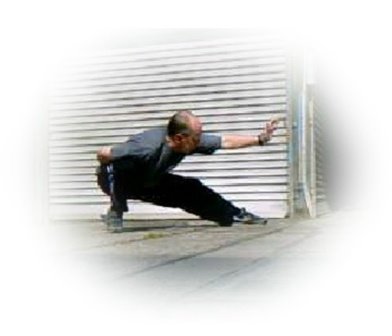By Bruce GrantApril 19, 2006
'The doctrine of ministerial responsibility, which gave our form of government a harsh but liberating kind of moral authority, is in tatters.'Illustration: Dyson
John Howard's reputation is established as a shrewd politician who keeps a finger on the public pulse and shows his feelings only on immaculate occasions, praising heroes of the sports or battle fields. He appeals to a deflationary streak in the Australian character, which tends to ask, when complex issues of ethics arise: "What's all the fuss about?"
View full article [click]
April 16, 2006
PLAYTIME over, a toddler says nighty-night and spreads a blanket on the floor on top of his silver-coloured friend.
It is an everyday scene at one US nursery school, where robots are immersed among children to find out what it takes for machines and humans to develop long-term relationships.
The experiment jointly run by Sony is revealing that children, with their open minds, can welcome and even develop emotions toward the robots, leading to new commercial possibilities as machines become smarter and friendlier.
Researcher Fumihide Tanaka, 33, who the dozen toddlers fondly call "IC", as in integrated circuit chip, said: "We adults tend to ask children if it is a toy or a human being, but they are free of such established categorisation.
"When I saw a personal computer for the first time, I asked if it was a television set.
"If intelligent-machine technology is successfully developed, a century later people will see the concept just as commonsense. This is natural as we are living in a different era now."
While Sony is undergoing business restructuring and has no plans to develop new models of its iconic QRIO humanoid or AIBO robodog, it is continuing to study artificial intelligence to apply in future electronic products.
Mr Tanaka, part of Sony Intelligence Dynamics Laboratories, has been working on the project jointly with the University of California at San Diego, led by Machine Perception Laboratory director Javier Movellan.
The children, aged up to 24 months, started spending one hour every day with a 58cm tall Sony biped in March last year at a San Diego school.
"Humans are sure to have innate ways to communicate without using a language. We can see this better in children as adults depend on languages," Mr Tanaka said during a brief visit back to Japan.
"A great characteristic of this project is that we don't invite children to come over to our laboratory but we go to them," he says.
Mr Tanaka remote-controls the robot from a hidden place for some 80 per cent of the immersion sessions, with the humanoid moving on its own for the rest of the time.
In one experiment, researchers brought in the robot to take part in the children's dance sessions and found that the toddlers would spend longer in the room if the humanoid was among them.
On average, toddlers would stay in the room for twice as long when the robot was around.
Mr Tanaka says researchers are increasingly convinced that children consider the robot not a toy or a living human being but "something between the two", a difficult idea for adults to understand.
To contrast with the biped, researchers also gave the toddlers a simple toy that looked like a robot but cannot move by itself.
The toy, named Robby, was handled roughly and constantly shoved to the ground - behaviour the toddlers would not show to their beloved walking, dancing humanoid.
Children initially stayed away from the biped out of caution but gradually warmed to it, hugging the robot and otherwise showing affection.
Initially, the robot would often fall over due to inconsiderate treatment. But after one to two months, the children would help the robot get back to its feet. Within three months, the toddlers would never allow the robot to fall.
"They are adapting themselves to the robot and empathising with it, although nobody teaches them to do so," Mr Tanaka said.
With the humanoid becoming a playmate, another robot, RUBI, which runs on a wheel with a TV panel in its belly, joined the class in April 2005 as a teaching assistant.
Robots are increasingly being put to practical use in Japan, which has a rapidly ageing population, ranging from serving as security guards to companions for the elderly.
The project involving the children could help researchers develop more sophisticated robots.
The project head Mr Movellan said human brains were "very good at handling uncertainty and timing in everyday life".
He said this was very difficult for the current generation of robots.
"We feel it is very important to understand the problem of real-time social interaction," he said.
April 19, 2006
NEW YORK: The brain's tendency to blur the line between sleeping and being awake may help explain the phenomenon of near-death experience, research suggests.
It has been an open question as to why some people see bright light, feel detached from their bodies or have other sensations when they are close to dying or believe they might die.
Some people view these so-called near-death experiences as evidence of life after death and many neurologists have considered the phenomenon to be too complex for scientific study.
But the research, published in the journal Neurology, implicates the blending of sleep and wake states as a biological cause of near-death experiences.
Researchers found that adults who said they had had such an experience were also likely to have a history of what is called REM intrusion - where aspects of the dream state of sleep spill over into wakefulness.
People may, for example, feel paralysed when they first wake up, or have visual or auditory hallucinations as they fall asleep or wake.
Of the 55 study participants who had had a near-death experience, 60 per cent had also experienced REM intrusion at some point in their lives. That compared with 24 per cent of 55 adults who served as a comparison group.
The findings suggest that the brain's arousal system predisposes some people to both REM intrusion and near-death experience, according to the study authors led by Kevin Nelson, a neurologist at the University of Kentucky.
During REM sleep, visual centres in the brain are highly active, while the limb muscles are temporarily paralysed.
So REM intrusion during peril could promote the visions of light and sensation of "being dead" that people often had during a near-death experience, Dr Nelson said.
Other evidence supported a role for REM intrusion in near-death experiences, he said. Stimulation of the vagus nerve, which connects the brain stem to the heart, lungs and intestines, triggers REM intrusion.
Reuters




0 Comments:
Post a Comment
<< Home